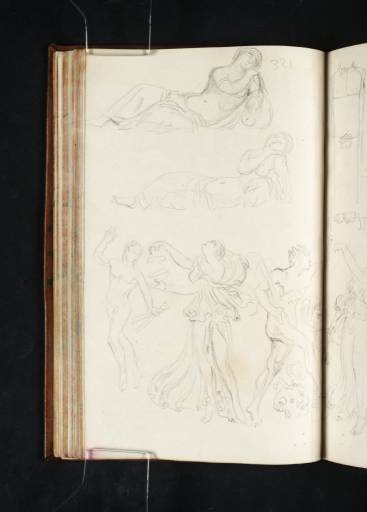Exhibition history
References
How to cite
Nicola Moorby, ‘Studies of Sculptural Fragments from the Vatican Museums, Including Two Sketches of a Reclining Nymph and Four Figures from a Sarcophagus Depicting the Dance of Bacchus 1819 by Joseph Mallord William Turner’, catalogue entry, November 2009, in David Blayney Brown (ed.), J.M.W. Turner: Sketchbooks, Drawings and Watercolours, Tate Research Publication, December 2012, https://www

